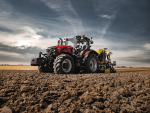North Otago dipping contractor David Ludemann has seen plenty of chemical families come, and then go.
Many arrived amid claims of being 'the dip to end all dips', that farmers would never need anything else. After 52 years working alongside farmers, Ludemann says the increase in tolerance to some chemicals - including those used in pour-ons - is making fly and lice management more challenging.
"Dipping is an important part of the animal health programme," he explains.
"A farmer looks at a contractor's bill and says it's expensive - at $1-$3 per head - but the job is done properly. It's a solid investment, when you consider the high cot of fly and lice damage."
Ludemann says the biggest problem he sees in his line of work is poor chemical application.
"Farmers might save money by doing their own dipping, but many are not putting anywhere enough chemical on," he explains. "They simply don't apply the volume needed to get enough chemical on. You've got to saturate them to the skin to get good results."
Ludemann uses a shower dip and each animal gets a good 3-4 minutes inside, depending on the length of wool.
He reckons the other advantage of using a contractor is that they know which chemical is doing the job in your area, in that season. Ludemann says lice and fly control can be achieved through good management.
"Dip regularly over summer and autumn with an effective chemical and you shouldn't have too many problems."
Best Results
For plunge dipping:
- Each animal should remain in the dip for 15-30 seconds and be completely immersed twice, pushed back and down using an appropriate tool.
- After the first few sheep have been through the dip, allow several minutes for shaking and soaking in, then check the back of their necks to ensure they are being completely saturated.
For shower dipping:
- Sheep need to be a similar size and able to mill around during showering.
- The top nozzles are the most important for saturation and should remain on during the whole showering period.
- Depending on wool length, body size, wool type, shower operating efficiency, etc, showering length is usually 7-9 minutes per pen.
- Check the first few pens of sheep for complete saturation.
- In a shower dip, the most difficult area to wet is under the neck. Again, allow several minutes before examining the animals, then adjust showering time accordingly.
Source: Beef+Lamb NZ's: 'Managing flystrike and lice - a practical guide for farmers'



















